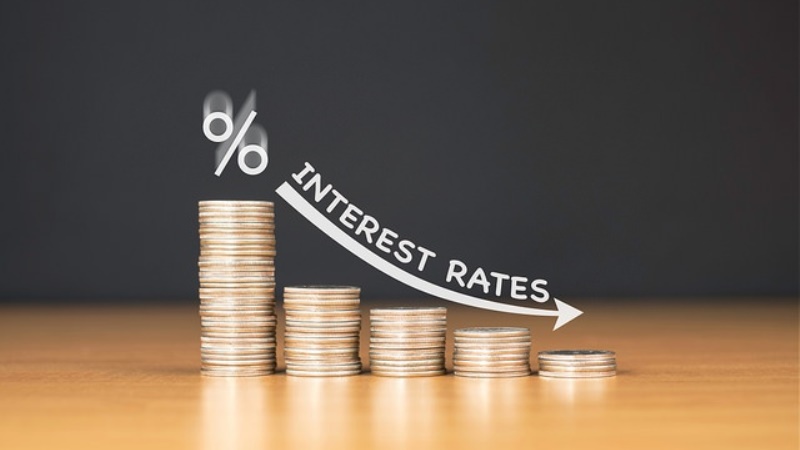The historically low key interest rates have a positive impact on lending rates. The better the credit rating, the lower the risk premium. In addition to the domestic banks, there are mainly intermediaries who work for foreign credit institutions.
Use favorable interest rates for follow-up financing
The low interest rates for mortgage lending are of course particularly pleasing for real estate customers, but also for owners. After all, homeowners whose old and relatively high commitment period expires in the foreseeable future can make do with the low interest rates for follow-up financing. The customer receives from his mortgage lender a new offer adapted to the current market situation within three months before the fixed interest rate expires.
Negotiating with the “old” lender and comparing the terms with other banks can pay off.
The house bank then charges a fee for early repayment. It should be calculated exactly whether the interest savings of the new service provider and the early repayment penalty to be paid are more advantageous for you than the further servicing of the current loan.
For example, with a loan of $ 200,000, an interest rate increase of one percentage point would already result in EUR 2,000 more interest expense per year and thus around $ 170 per calendar month. Loans with a fixed contract term of more than ten years can be canceled by you, the borrower, after ten years, while the house bank is linked to the fixed contract term.
Are low interest rates the foundation for the coming time?
The question of whether a low key interest rate by the central bank increases the willingness of banks to take risks has been the subject of controversy since the financial market crisis at the latest. This is supported by the fact that the banks granted more risky loans between 2002 and 2005 and the majority of the key interest rate was at a low interest rate level.
Lower interest rates (ie lower short-term interest rates) can be risky for two reasons. Firstly, with low interest rates, many investment projects are carried out by companies that tend to be scarce projects that would not pay off with high interest rates.
This increases the percentage of bad debts. On the other hand, low interest rates go hand in hand with a high level of liquidity. In this way, the banks can reform themselves very easily and inexpensively within a very short time and expand the credit volume.
In addition, security deposits are unprofitable in a low-interest phase and banks that are looking for profitability put their funds in risky corporate loans and not in unprofitable security deposits. Lower interest rates therefore increase the volume of credit and individual risks for both companies and banks.
As long as no other measures, such as countercyclical capital and liquidity needs of the banks, take effect, a longer period with low interest rates can be the basis for the next?
The scientists use information from the Spanish-language credit register, which provides detailed information on all loan applications from companies, credit institution decisions and the requirements for credit protection. He also knows the banks’ loan portfolios. Economists also use key figures from the corresponding banks and companies. With an average probability of occurrence of 36% over the years.
At 5.5 percentage points, the banks’ own funds ratio was on average quite low, in line with the average European value before and during the period. The average risk that companies would not meet their payment obligations was 3%.
However, a reduction in the overnight rate by one percentage point increases the chance that a loan will be granted to a high-risk company by 7 percentage points.
After that, the banks also act on low interest rates depending on how well they are co-financed. In comparison, the banks’ capital ratios differ by one standard deviation (2 percentage points). The diagram shows the difference between the increase in loans to fixed companies (blue) and to high-risk companies (purple).
A credit institution with little own funds has to cope less than a comparable bank with higher own funds.
The poorly capitalized banks are therefore more likely to grant riskier corporate loans when interest rates fall. Loans that are more common, but which, if positive, lead to higher interest rates. In the further course, the authors analyze the committed loan volume and the requirements for credit protection. It turns out that companies that were insolvent in the future will receive less credit than their competitors with a white safety vest.
But this situation also changes with falling interest rates. Lower interest rates increase the lending volume. At banks, risky loans are more likely to be granted, the committed loan amounts are larger. Is the volume of the loans only increasing due to the increased liquidity situation or is there a structural deterioration in the quality of the loans?
To answer the question, the researchers are examining whether the loans granted to riskier companies are really being granted more often and whether there is less security available in the event of bankruptcy. The results confirm the assumption that high-risk loans are later more likely to default. They are also often given without security, so that the damage to the banks is greater.
At the same time, the security requirements for these loans decrease. With these loans, the probability of occurrence for completely unsecured receivables is just under 7 percentage points in relation to solid banks.
Sufficient capital standards for banks and preventive measures to reduce risk in the real economy are also essential.





